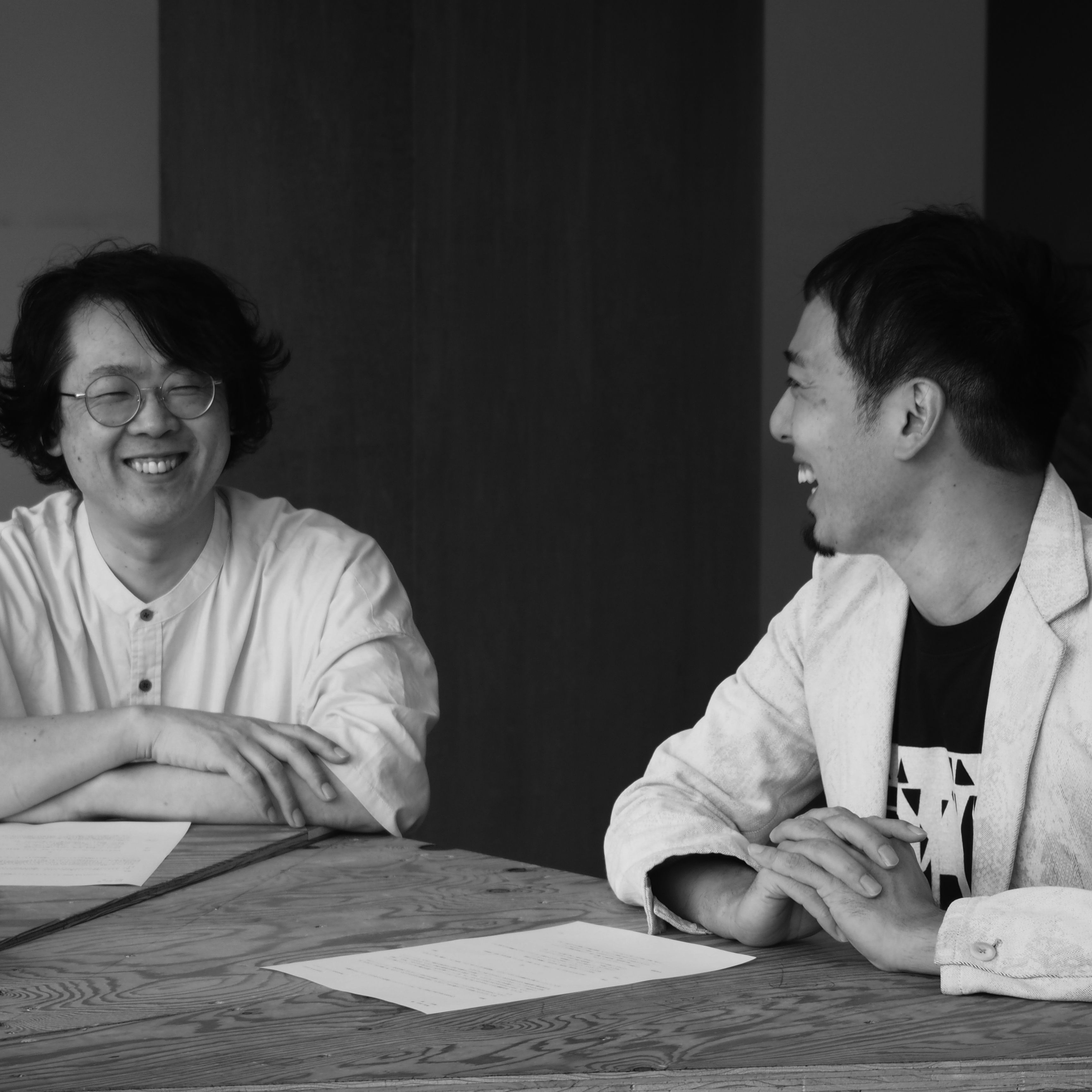“An Interview with the Creative Directors (Part I). Deep Dialogues In Addressing Two Questions. How to Create “A Sweet Sanctuary Protected by A Magic Spell”

Three Directors Creating “A Sweet Sanctuary Protected by A Magic Spell”
This year, Connected Ink takes place in five cities in cooperation: Tokyo, Seoul, Shanghai, Düsseldorf, and Portland. Each location is staging its own version of Connected Ink. The event is guided by two main questions: “Have Humans really evolved since their origins?” and “How do Wacom's technology and tools contribute to human creativity?” The event offers the audience time and space to explore these questions. Two creators, Takashi Itagaki and Hajime Fukuda, are behind the immersive world that emerges in the Tokyo venue, which is filled with a magical atmosphere – “a sweet sanctuary protected by a magic spell” as they put it. They teamed up with Nobu Ide, CEO of Wacom, to host Connected Ink 2022, working out a conceptual blueprint of the event together through interactive dialogues that fuel their imagination. Here, the three figures offer us a behind-the-scenes look at the “(Conceptual) Making Of Connected Ink 2022.” Mr. Itagaki’s role in the group is mainly to design the event by “formulating messages in right words.” In Part 1, we zoom in on Mr. Itagaki’s thinking during the process.

Human Beings as a Part of Natural Phenomena
Mr. Itagaki is an Art Director at the Runbini Art Museum (Hanamaki City, Iwate). The name of the gallery stems from Lumbini in Nepal (transcribed as Runbini in Japanese), which is believed to be the birthplace of the Buddha, Siddhartha Gautama. The museum is designed to exhibit “works of expressions which bring life to the viewer.” To this end, it houses Outsider Art (art pieces created by original minds not confined to the exiting cultural trend or style, including those created by mentally disabled artists) and Art Bru. Through these activities, the museum aims to cast a light upon “the radiance of life” that shines through the dark by tearing down all boundaries dividing the world. Mr. Itagaki’s role at Connected Ink 2022 is to “formulate messages in the right words.” The two aforementioned questions are interpreted, repeatedly discussed, analyzed from all perspectives, dismantled, reconstructed in a multifaceted way, and expressed in concrete language. In this interview, Mr. Itagaki shares his view on technological development and the human wishes at its root.
You cannot talk about human evolution and development without technologies – both in positive and negative terms. In my opinion, humans and their tendency to develop technologies are part of the phenomenon of nature. When seen from a macro perspective of the history of humankind, biology, the Earth, and the universe, I wonder which direction technology is headed. It is my job to find the right words to ask such a question properly.”

Human Wishes at the Root of Technological Development
Mr. Itagaki continues with his thoughts on the relationship between technologies and human wishes by carefully selecting words from the depth of his mind.
“Technologies can fulfil our wishes. Even wishes that are not yet attainable today will surely come true one after another through the power of advancing technologies. Only after a specific wish is fulfilled do you come to wonder at times whether it is really what you wanted. The realization of a wish prompts us to ask ourselves if our wish was made with the right intentions. The most advanced technology in prenatal diagnosis already allows us to screen out human lives. If someone wishes for the “genetic integrity” of their offspring, is such a wish really worth fulfilling? I am afraid that the fundamental meaning of human beings is harmed by such a right-or-wrong judgement on life. In a way, we are safe as long as our wishes remain out of reach, regardless of how much we want them. But by keeping on wishing, humans will develop technologies designed to realize them in the future. When we wish for so many different things, some wishes may be ominous, the realization of which may harm humans in the future. On the other hand, there are also plenty of wishes which do no harm to humanity, e.g. the wish “to touch our loved ones” or “to be blessed with love” will never harm humanity. And technologies are also available to realize such wishes.
Therefore, thinking about technological development ultimately means thinking about the wishes we intend to fulfil with technologies. On one hand, there are “human wishes that may harm humanity” in the future, the fulfillment of which we may think about but could end up being dangerous. On the other, there are “human wishes that do not harm humanity,” which are naturally born from our hearts without any bitter aftertaste. We should be aware of such a difference in these two types of wishes right from the start. I hope that Connected Ink 2022 can serve as a sort of wake-up call in this context.
Which wishes reside in the human heart? To find an answer to this question, we need to cast a penetrating look into our hearts. It is truly thrilling to see how sharp and insightful Mr. Itagaki is in approaching this theme without losing his human touch. He begins by putting concepts into concrete words. Then, Mr. Fukuda comes in to interpret Mr. Itagaki’s words and turn them into creative works of music and stage performance. Part II takes a close look at Mr. Fukuda’s production process (Click here for Part II).
editor / text _ 川上主税(Chikara Kawakami)
